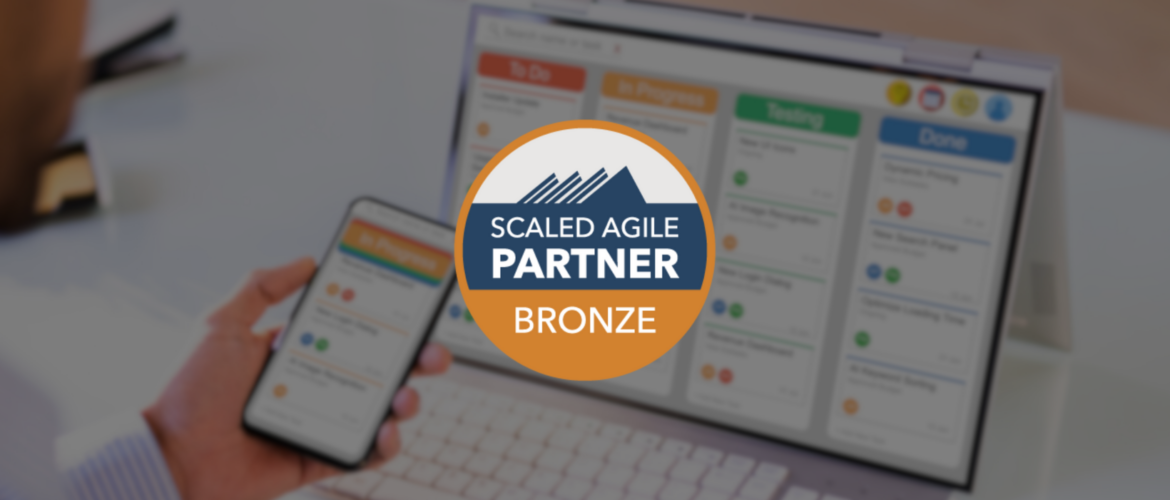How to Implement SAFe® for Government: A Step-by-Step Guide
- February 11, 2025
- Posted by: AcumenITTrainingInc
- Category: Technology ,

Introduction
As government agencies strive for greater efficiency, transparency, and adaptability, many are turning to SAFe® (Scaled Agile Framework) to modernize project management. Implementing SAFe® in government can be challenging due to bureaucratic processes, compliance requirements, and legacy systems. However, with a well-structured approach, agencies can successfully transition to an Agile framework.
This guide outlines a step-by-step approach to implementing SAFe® for Government, helping agencies overcome obstacles and drive meaningful change.
Step 1: Secure Leadership Buy-In
For SAFe® adoption to succeed, executive sponsorship is critical. Government leaders must understand the benefits of Agile and commit to supporting the transformation.
How to Secure Leadership Support:
-
Conduct Agile awareness workshops for executives.
-
Showcase success stories from other government agencies using SAFe®.
-
Align Agile adoption with government strategic goals.
Step 2: Train Teams in SAFe® Principles
Education and training are essential for smooth implementation. Teams must understand Lean-Agile principles, roles, and responsibilities within SAFe®.
Recommended Training Programs:
-
SAFe® for Government Certification for leaders and practitioners.
-
Hands-on workshops covering Agile Release Trains (ARTs).
-
Regular coaching and mentoring sessions.
Step 3: Establish Agile Release Trains (ARTs)
Agile Release Trains (ARTs) form the backbone of SAFe®, enabling teams to collaborate effectively and deliver value in short, iterative cycles.
How to Set Up an ART:
-
Identify cross-functional teams that will work together.
-
Define a Program Increment (PI) timeline (typically 8-12 weeks).
-
Organize a PI Planning event to align teams on objectives and roadmaps.
Step 4: Integrate Compliance & Governance
Government projects require strict adherence to regulatory and security standards. SAFe® helps integrate compliance early in the development process.
Best Practices for Agile Compliance:
-
Implement continuous security testing throughout development.
-
Work with compliance officers to create Agile-friendly policies.
-
Use Lean Governance to ensure flexibility while maintaining control.
Step 5: Foster a Culture of Continuous Improvement
Successful Agile transformation requires a shift in mindset. Government agencies should embrace continuous learning and iterative development.
How to Sustain Agile Adoption:
-
Conduct retrospectives to identify areas for improvement.
-
Encourage teams to experiment with new Agile techniques.
-
Measure progress using performance metrics and feedback loops.
Conclusion
Implementing SAFe® for Government is a transformative journey that requires leadership commitment, structured training, and cultural change. By following this step-by-step guide, government agencies can overcome traditional bureaucratic hurdles and achieve greater efficiency, flexibility, and value delivery.
What’s Next?
Explore more on SAFe® in the public sector:
What is SAFe® for Government? A Beginner’s Guide to Agile in the Public Sector
Why Government Agencies Are Adopting SAFe® for Agile Transformation
SAFe® vs. Traditional Project Management in Government: Which One is Better?
Is SAFe® for Government Certification Worth It? Career Benefits & Opportunities
🚀 Begin your SAFe® transformation today!
Author: Acumen IT Training, Inc
Leave a Reply Cancel reply
Popular Courses
Archive
Working hours
| Monday | 9:00 am - 6.00 pm |
| Tuesday | 9:00 am - 6.00 pm |
| Wednesday | 9:00 am - 6.00 pm |
| Thursday | 9:00 am - 6.00 pm |
| Friday | 9:00 am - 6.00 pm |
| Saturday | Closed |
| Sunday | Closed |





